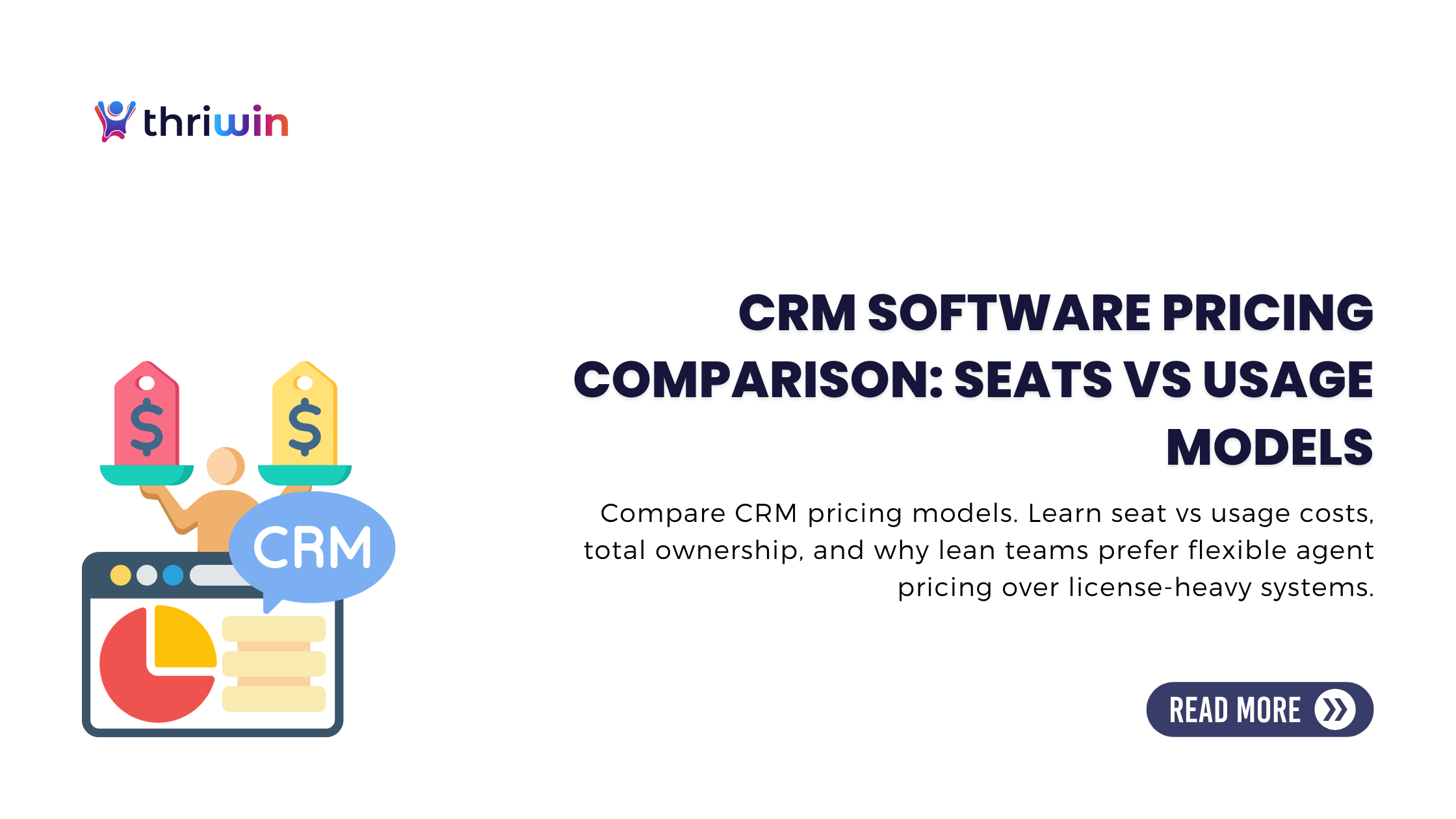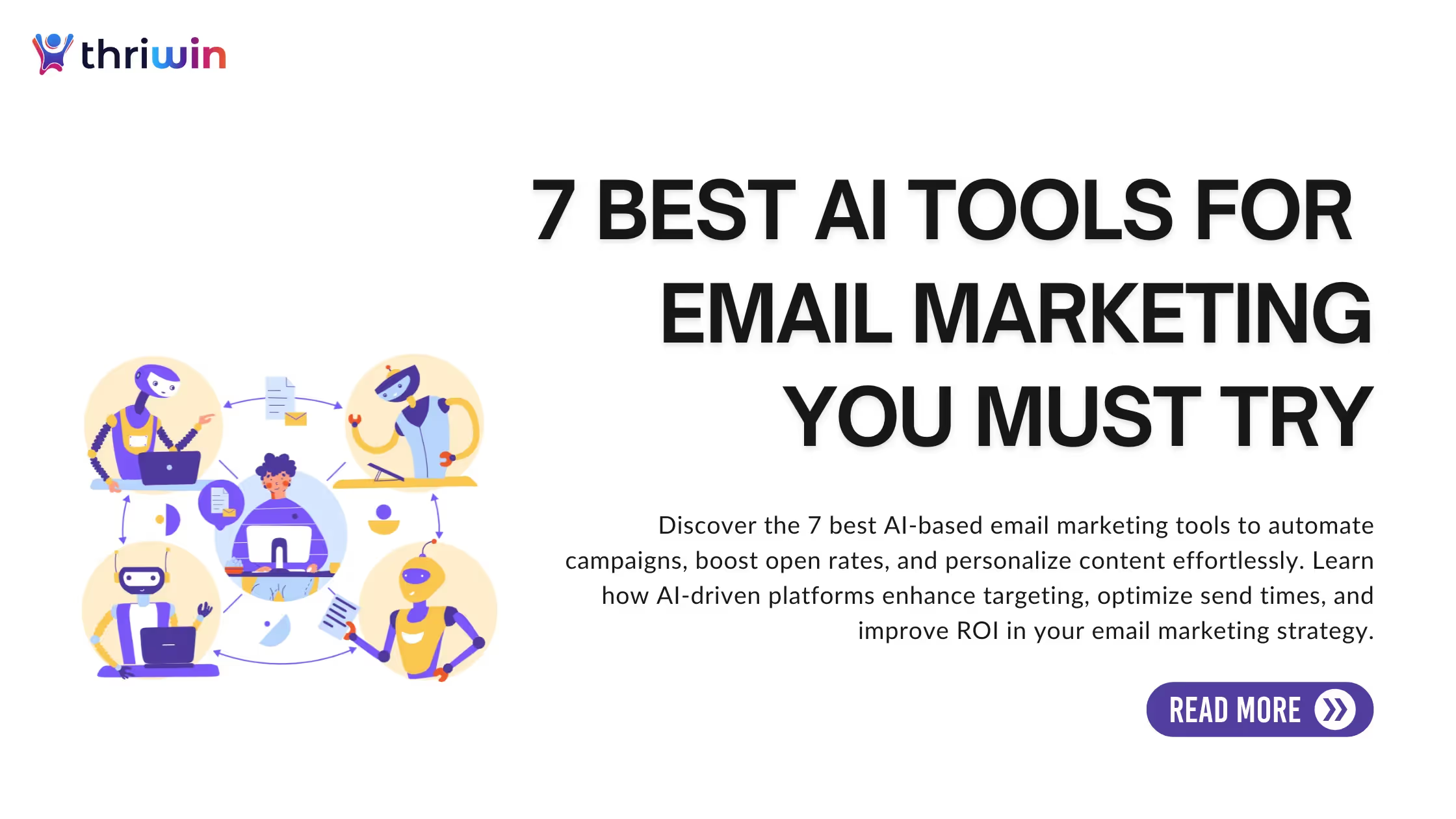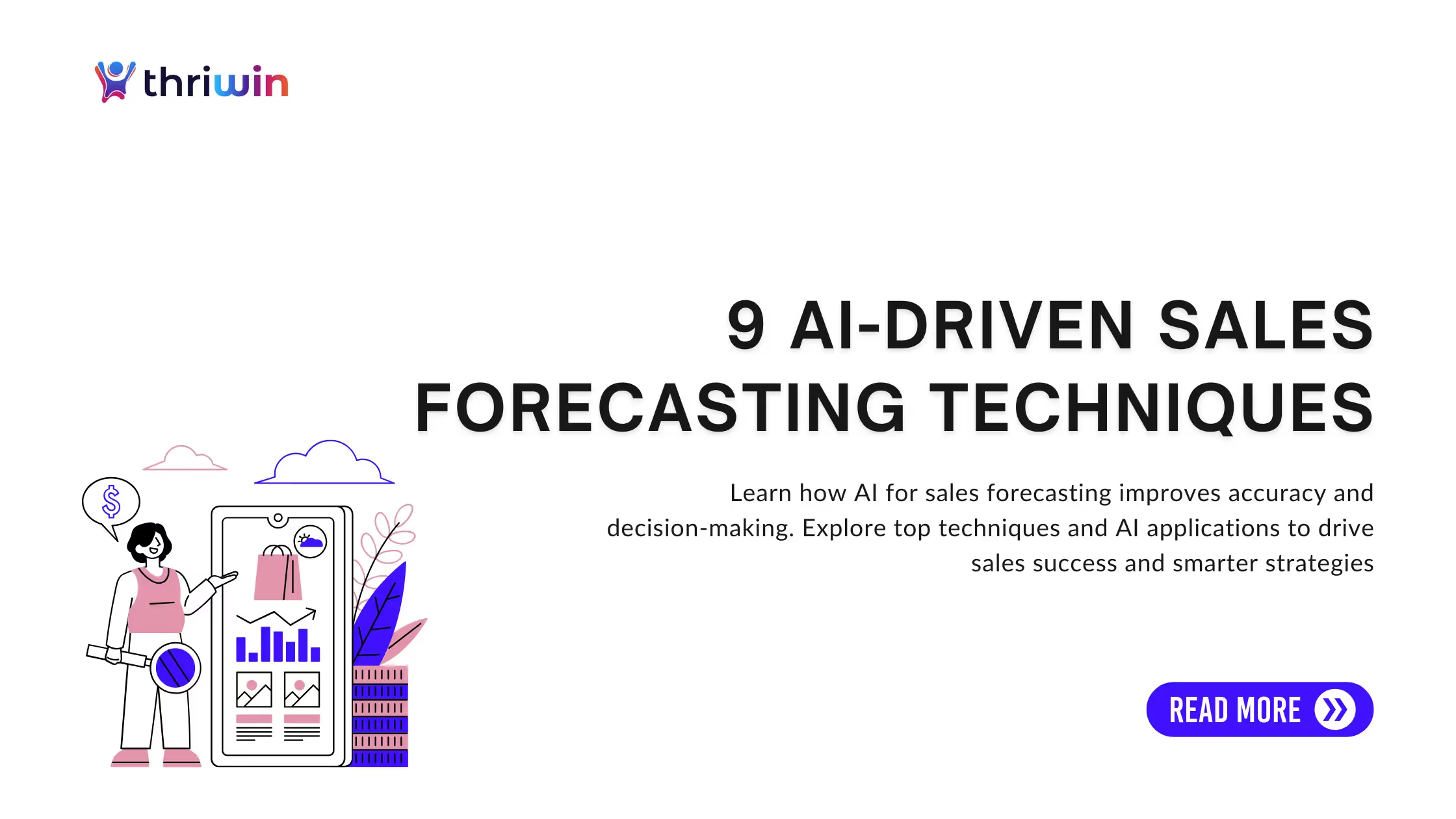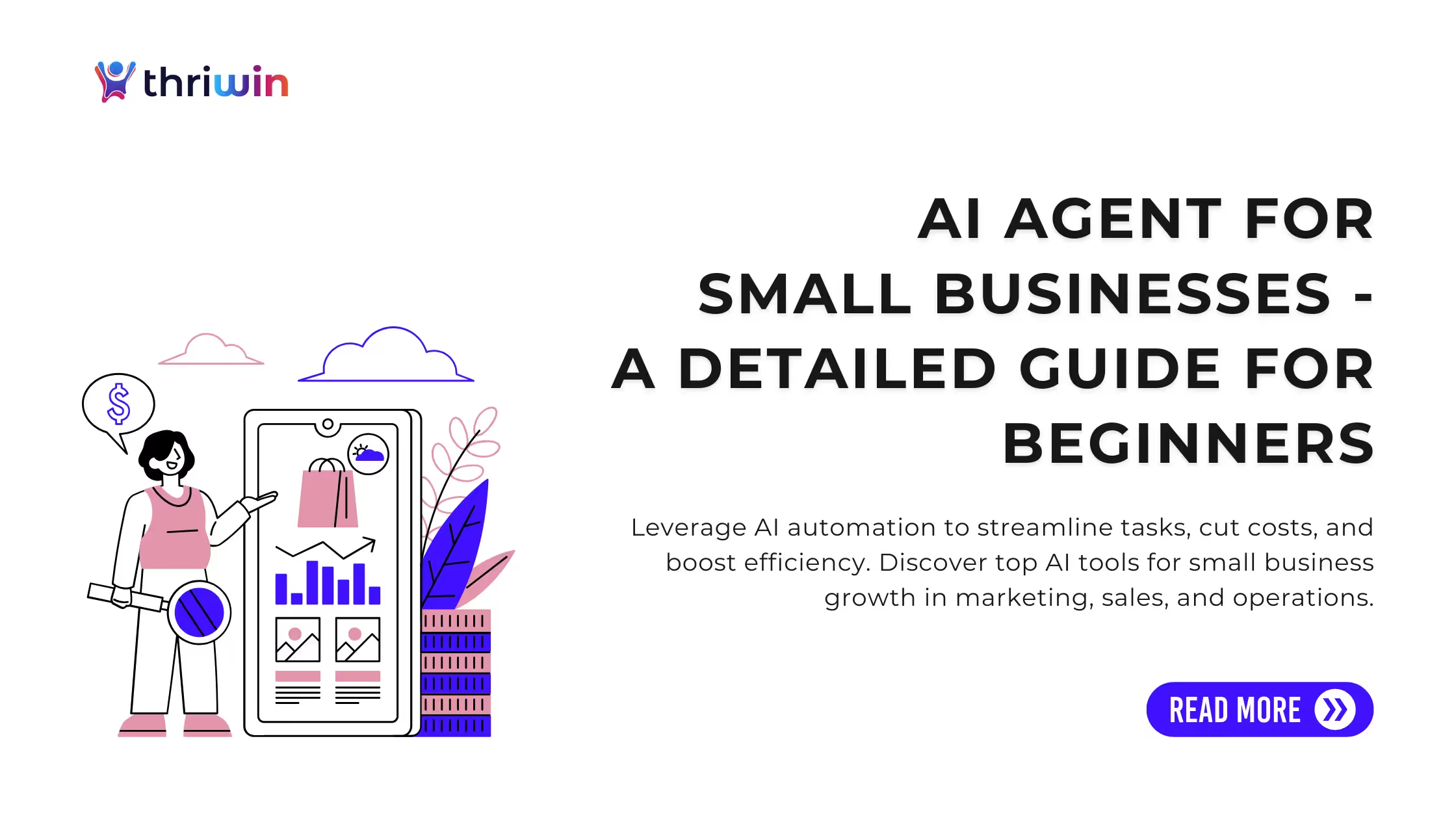Are you stuck paying for CRM licenses your team barely touches?
It’s a common frustration that businesses overspend on seats while productivity stalls. For lean teams, this isn’t just wasted budget; it’s a barrier to growth. The real challenge isn’t the sticker price, but the hidden costs of ownership. This article breaks down pricing models, exposes common pitfalls, and demonstrates why usage-based CRM pricing provides the flexibility, scalability, and efficiency that modern teams need to thrive.
Why CRM Pricing Models Matter for Lean Teams
Pricing structures in CRM software aren’t just numbers on a pricing page; they shape adoption, ROI, and sales efficiency. For lean teams, selecting the wrong model can result in paying for unused licenses or wasting hours managing administrative overhead. The proper pricing structure should scale with your workflow and sales cycles, not against them.
Common Pain Points with Seat-Based CRM Pricing
A seat-based model may seem straightforward at first, but lean teams often encounter hidden inefficiencies. Here are the most common frustrations that drive up real costs and slow adoption.
- Paying for unused seats: Many businesses purchase more licenses than they actually use, resulting in wasted spending.
- Admin overhead in assigning/removing licenses: Constantly updating licenses takes valuable time away from core sales activities.
- Forced upgrades: Teams often need to upgrade plans just to unlock basic features, even if the headcount doesn’t justify the cost.
Why Usage-Based Pricing Aligns with Lean Team Needs
Usage-based pricing gives lean teams agility. Instead of committing to costly licenses, they align spending with activity levels, ensuring resources are optimised and costs flex with sales cycles.
- Pay only for what’s used: Whether it’s minutes, events, or agent activity, costs scale with actual use.
- Flexibility for fluctuating sales volumes: Ideal for teams whose outreach varies from month to month.
- Lower entry barrier for startups: No need to commit to dozens of licenses before you’re ready to use them.
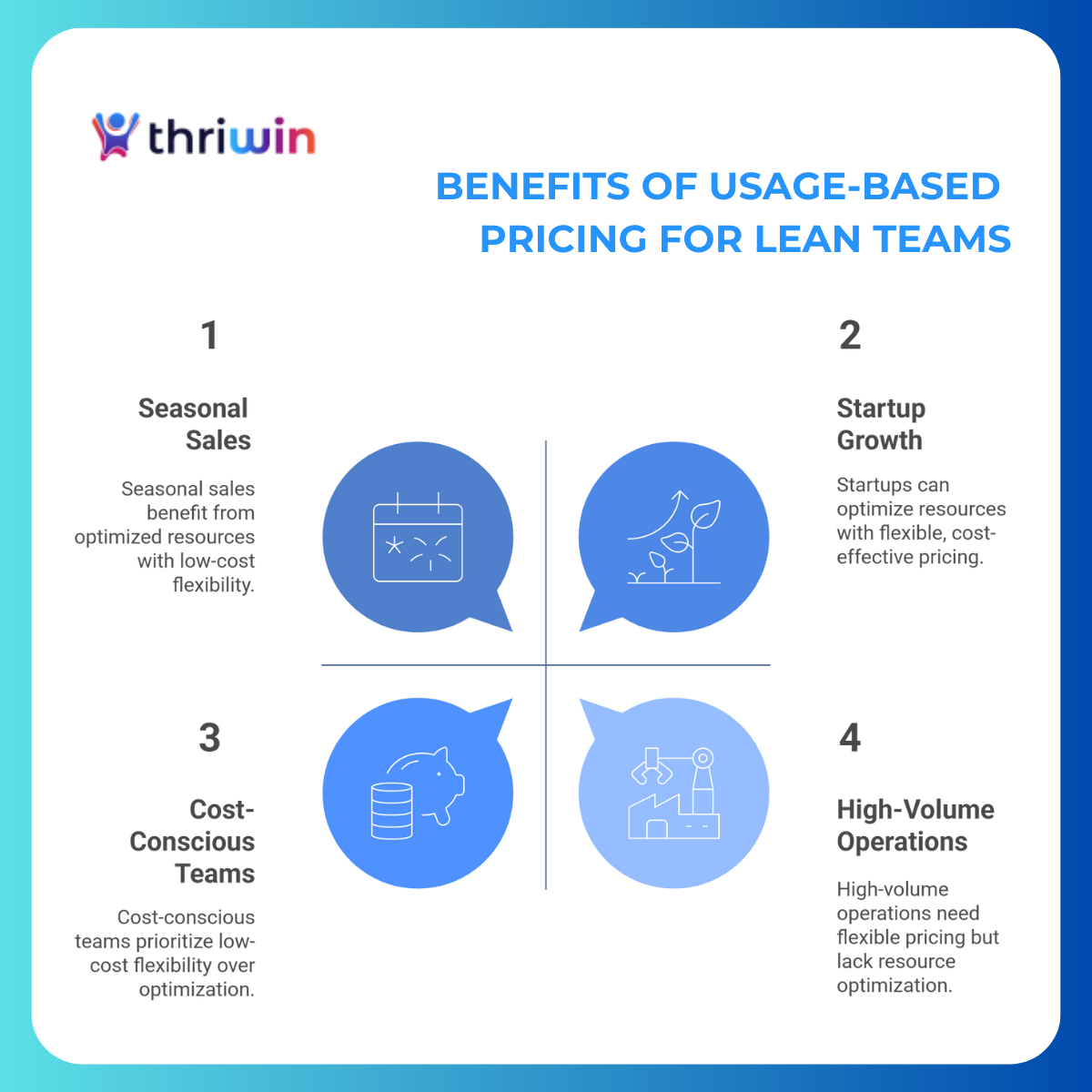
CRM Software Pricing Comparison Models
There are three dominant CRM pricing structures businesses encounter. Each option comes with trade-offs in terms of cost, predictability, and flexibility.
Seat-Based / License-Based Model
This is the most traditional pricing structure. Businesses pay per user, typically ranging from $20 to $80 per seat per month. It’s predictable but inflexible.
Pros:
- Easy to forecast costs.
- Works well for enterprises with large, stable teams.
Cons:
- Wasted spend on unused seats.
- Locked into license tiers that may not match actual usage.
Usage-Based / Agent Pricing Model
Here, businesses pay based on activity rather than the number of employees. Pricing could be structured around minutes of agent time, events, or transactions.
Pros:
- Costs scale directly with usage.
- Lower risk for lean teams testing new markets.
Cons:
- Monthly spend may fluctuate, requiring more careful budget monitoring.
- It may not suit enterprises with steady, predictable usage.
Hybrid CRM Pricing Models
A mix of both seats and usage tiers. For example, a CRM might charge per user plus extra for exceeding feature caps.
Pros:
- Allows a balance between user access and usage volume.
Cons:
- It can be confusing for SMBs.
- Often results in higher overall costs due to stacked charges.
Understanding the True Cost of CRM Systems
List price is only the beginning. The total cost of ownership (TCO) reveals the real financial impact, factoring in not only licenses but also time, integrations, and operational overhead.
Cost of CRM System Beyond Licensing
Even beyond subscription fees, CRM ownership carries extra expenses. These hidden costs, including training, integration, and administrative time, often outweigh the cost of licenses, making them crucial to consider when comparing prices.
- Onboarding and training: Staff must be trained, often requiring dedicated sessions or external support.
- Integrations: Linking CRM with marketing, analytics, or support tools can add significant costs.
- Hidden admin hours: License management and system upkeep consume time that could be spent on sales and other revenue-generating activities.
- Feature lock-ins: Essential tools may be hidden behind higher-tier plans, requiring users to upgrade to access them.
CRM Implementation Cost Factors
Implementation costs often exceed license fees. From consulting to data migration, these hidden expenses can significantly impact total ownership and slow adoption if underestimated by lean teams.
- Consulting fees: Many teams need expert help during rollout.
- Data migration: Moving customer records into a new CRM can be a costly process.
- Workflow customisation: Tailoring features to your team adds delays and expenses.
- Time-to-value delays: Long setup times slow ROI.
Comparing TCO – Seat vs. Usage-Based: An accurate cost comparison shows how quickly usage-based pricing outpaces seat-based savings. Factoring in admin and wasted licenses highlights why lean teams benefit more from flexible pay-per-use models.
Consider a lean sales team of 10:
- Seat-based model: 10 seats × $40/seat = $400/month. Add ~10 hours of admin at $30/hour = $700/month TCO.
- Usage-based model: 5,000 minutes at $0.05/min = $250/month, with minimal admin overhead = $250/month TCO.
That’s a 64% cost difference in favor of usage-based pricing.
Which Pricing Model is Right for You?
The ideal CRM pricing model depends on factors such as team size, workflow stability, and sales volume. Lean teams prioritise flexibility, while enterprises may value predictability and cost control above all.
When Seat-Based CRM May Still Work
Seat-based pricing remains relevant for specific organisations. In stable, predictable environments, it offers cost clarity and minimal fluctuations, making it more appealing to large enterprises with consistent user engagement.
- Large enterprises with a stable workforce.
- Companies with predictable, steady usage.
When Usage-Based Agent Pricing Wins
Usage-based pricing shines for agile companies. It adapts to fluctuating sales activity, letting lean teams pay only for what they use, making scaling affordable and eliminating wasted license costs.
- Startups are scaling sales quickly.
- Lean SMB teams with irregular outreach patterns.
- Companies are testing new markets without committing to long-term license costs.
Why Thriwin’s Pay-Per-Use Agents Solve License Bloat
Thriwin was built for lean teams that want to scale without wasting idle seats. Its pay-per-use approach ensures affordability, flexibility, and efficiency, making it a modern alternative to license-heavy CRMs.
Pay Only for Agent Minutes, Not Idle Seats
Instead of paying $40 for each user, even those who rarely log in, businesses pay only for the actual minutes used.
Scale Outreach Without Admin Bottlenecks
No need for approval cycles or constant license management. Teams can scale instantly.
Optimised for Lean Teams and SMBs
With lower upfront costs and a pay-as-you-grow structure, Thriwin aligns with the needs of startups and growth-stage companies.
Choose Flexibility Over “Cheap Seats”
CRM pricing isn’t just about picking the lowest headline cost; it’s about aligning the model with how your team truly works. Lean teams thrive with flexibility, scalability, and efficiency. Seat-based pricing often locks you into waste, while usage-based models give you the freedom to pay only for what delivers value. The choice comes down to whether you want to manage licenses or manage growth.
Ready to cut license bloat and scale smarter? Explore Thriwin’s pay-per-use CRM today.
FAQs
What is the average cost of a CRM system?
The cost of a CRM system varies from $20 to $80 per user per month for seat-based models. However, lean teams often incur higher total ownership costs. Usage-based models can be more cost-effective since you only pay for the minutes or events actually used.
How do you compare CRM software pricing?
CRM software pricing comparison should consider more than per-seat costs. Evaluate the total cost of ownership, including licenses, administrative time, training, and integrations. Usage-based CRM pricing often benefits lean teams by charging only for active usage rather than idle seats.
What hidden costs exist in CRM implementation?
Beyond license fees, CRM implementation costs include data migration, workflow customisation, training, and time lost to onboarding. These can exceed the initial subscription price. Evaluating TCO helps avoid underestimating real costs.
Why is usage-based pricing better for startups?
Startups benefit from usage-based CRM pricing since it lowers upfront costs. Teams only pay for what they use, making it easier to scale outreach without committing to large license packages. This flexibility suits lean operations.
Does Thriwin offer usage-based CRM pricing?
Yes. Thriwin’s CRM utilizes agent pricing, where businesses pay only for the agent's minutes or events. This eliminates license bloat, reduces admin overhead, and offers flexible scaling, making it ideal for lean teams and growing SMBs.
%201.svg)


